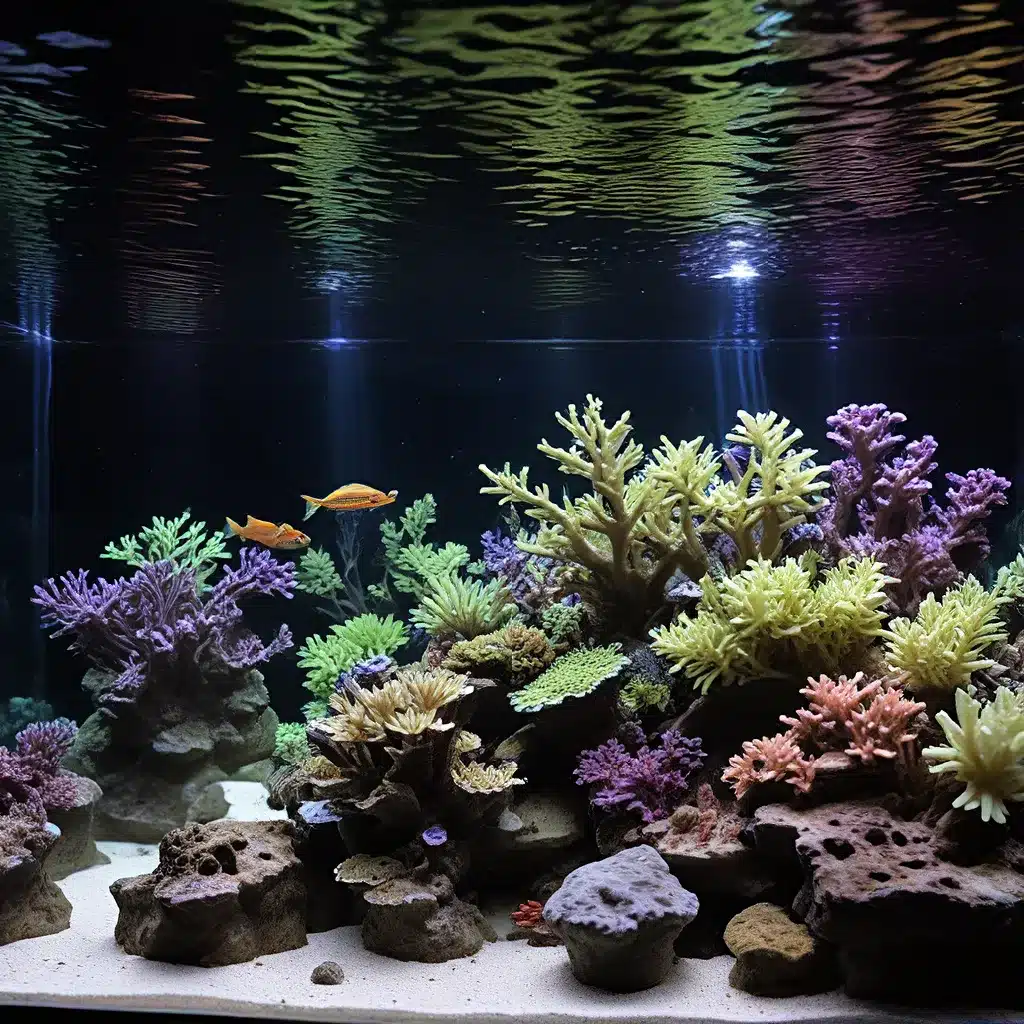
Achieving the perfect lighting setup for a thriving saltwater aquarium can be a complex and nuanced endeavor. Whether you’re a seasoned reef enthusiast or just starting your aquatic journey, understanding the role of Photosynthetically Active Radiation (PAR) is crucial for maintaining the health and vibrancy of your underwater ecosystem.
Demystifying PAR: The Key to Coral and Plant Vitality
At the heart of saltwater aquarium lighting optimization lies the concept of PAR. This measure of light intensity specifically targets the spectrum of wavelengths, ranging from 400 to 700 nanometers, that corals and aquatic plants utilize for photosynthesis. Maintaining the right PAR levels can have a profound impact on the growth, coloration, and overall well-being of your aquarium inhabitants.
Different species of corals and aquatic plants have varying light requirements, with some thriving in low-light environments while others demand higher intensities. For instance, soft corals tend to prefer PAR levels between 50 and 150, while more light-demanding Small Polyp Stony (SPS) corals can flourish in the 200 to 400 PAR range. Understanding these species-specific needs is crucial when designing your aquarium’s lighting system.
Harnessing the Power of PAR Measurement
Accurately measuring PAR within your aquarium is the key to unlocking the optimal lighting conditions for your reef ecosystem. A PAR meter, a specialized tool designed for this purpose, allows you to gather comprehensive data on the light intensity at different depths and locations throughout your tank. By taking these measurements at various times of the day, you can gain a clear understanding of the lighting distribution and identify any problem areas that may require adjustments.
Regularly testing PAR and making informed adjustments to your lighting setup is essential for maintaining the health and vitality of your corals and aquatic plants. Excessive PAR, often defined as levels exceeding 400-500, can lead to coral bleaching and other detrimental effects, while inadequate PAR can stunt growth and compromise the overall aesthetic appeal of your aquarium.
Tailoring Lighting to Specific Coral and Plant Needs
Once you have a comprehensive understanding of the PAR levels in your aquarium, the next step is to fine-tune your lighting system to cater to the unique requirements of your aquarium inhabitants. This may involve adjusting the intensity, spectrum, and duration of your lighting, as well as strategically positioning your light sources to ensure even coverage.
For low-light corals such as soft corals, maintaining PAR levels in the 50-150 range is crucial. On the other hand, SPS corals and other high-light demanding species thrive in the 200-350 PAR range. By carefully balancing the lighting requirements of your various coral and plant species, you can create a harmonious and visually stunning underwater landscape.
It’s important to note that the minimum PAR requirements for corals can vary significantly, with some species like Montipora requiring as little as 150 PAR, while Acropora may need a minimum of 250 PAR to flourish. Closely observing the growth and coloration of your aquarium inhabitants can provide valuable insights into fine-tuning your lighting setup.
Embracing Sustainable Aquascaping Practices
As you navigate the complexities of saltwater aquarium lighting optimization, it’s also crucial to consider the broader environmental impact of your aquarium practices. Sustainable aquascaping techniques, such as the strategic use of energy-efficient LED lighting and the incorporation of live rock and macroalgae, can not only enhance the aesthetic appeal of your setup but also contribute to a more sustainable and eco-friendly ecosystem.
By leveraging the power of generative AI tools like Reef-AI, you can efficiently navigate complex regulatory frameworks and ensure your aquarium practices align with the latest sustainability standards and best practices. This forward-thinking approach not only benefits the long-term health of your aquarium but also aligns with the growing emphasis on environmental stewardship within the aquarium hobby.
Ultimately, mastering the art of saltwater aquarium lighting optimization requires a combination of technical knowledge, attentive observation, and a willingness to experiment and adapt. By staying informed, utilizing the right tools, and prioritizing the specific needs of your aquarium inhabitants, you can create a thriving, visually captivating, and sustainable underwater oasis that will inspire and delight aquarium enthusiasts.
For more informative and engaging content on all things aquatic, be sure to explore the resources available on KingAquarium.com, your go-to destination for aquarium enthusiasts.

